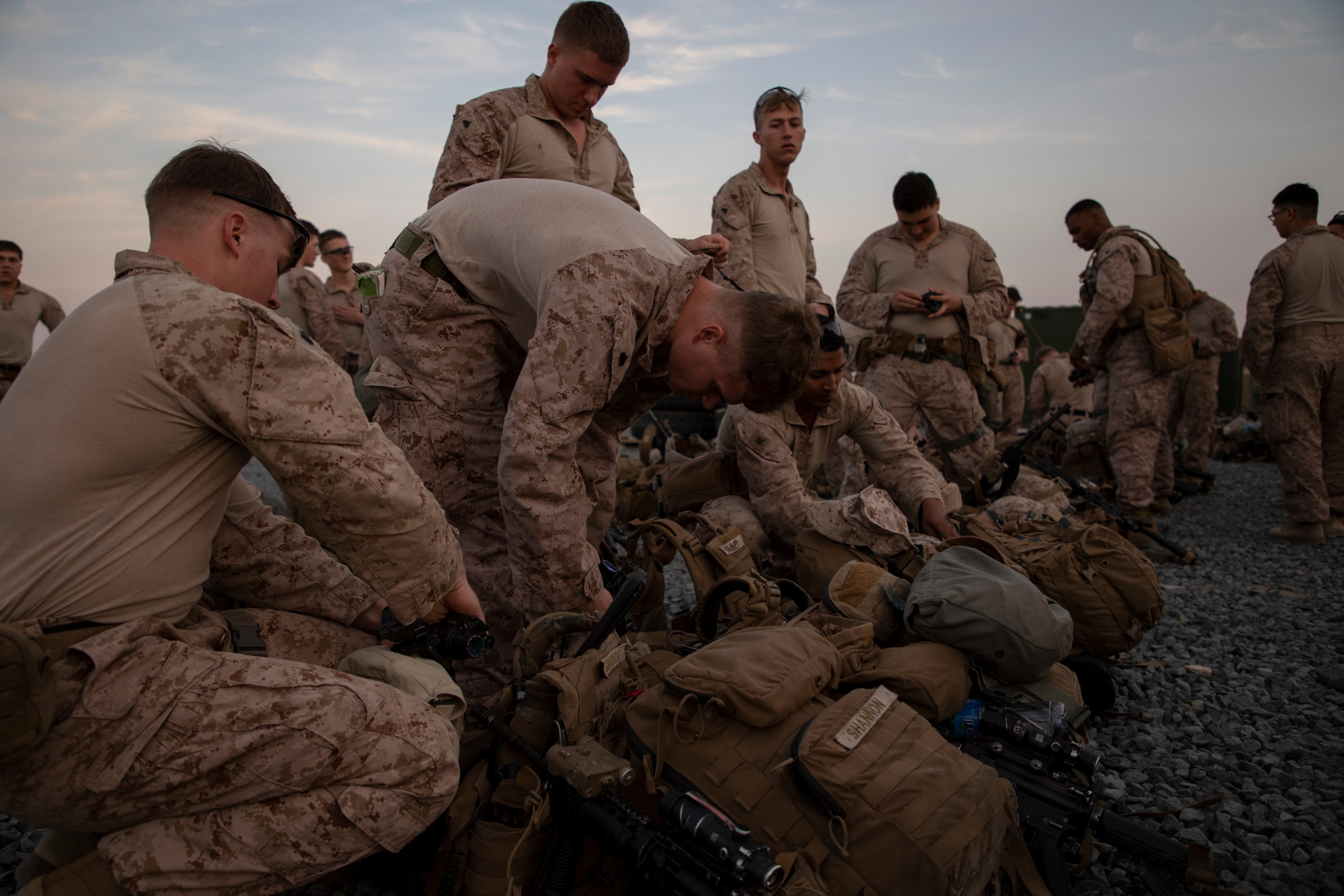When President Donald Trump ordered the withdrawal of U.S. troops in Syria in October reports from the battlefield came streaming in of coalition bases folding overnight, vehicles being destroyed and bases being bombed as American forces tried to hightail it out.
Once again, American forces may be prepping for a potential withdrawal of the roughly 5,000 troops in Iraq as anger over the death of Iran Quds Force commander Qassem Soleimani sweeps the region. How those forces would withdraw and what may be left behind as America scrambles to exit Iraq a second time is unknown.
The Pentagon has provided no explanations or details about what a withdrawal would look like and Secretary of Defense Mark Esper told reporters at the Pentagon Tuesday that “our policy has not changed. We are not leaving Iraq.”
The biggest hint of plans to withdraw American troops from Iraq comes from a letter addressed to the Iraqi military regarding repositioning of coalition troops and “onward movement" out of Iraq following a Jan. 5 non-binding vote passed by Iraqi parliament to expel coalition troops.
Army Gen. Mark Milley, the Joint Chiefs chairman, told reporters at the Pentagon Monday that the widely circulated letter from the U.S. military was just a draft, he also called it a mistake.
But, according to a report from the Washington Post, senior Iraqi officials say Iraqi Prime Minister Adel Abdul-Mahdi is translating the letter as a message that American forces intend to withdraw from the country.
Esper pushed back against that Tuesday at the Pentagon.
“There is no signed letter, to the best of my knowledge,” Esper said. “I have asked the question.”
U.S. officials have largely ignored the non-binding vote, analysts and national security experts have suggested an actual withdrawal from Iraq is unlikely.
Esper argued that many of Iraq’s Sunni and Kurdish members of parliament did not participate in the Sunday vote, and many of the Shiite members voted to expel the U.S. “at threat of their lives.”
So far, he added, Iraq hasn’t taken any actions on the ground that are hampering the Defeat ISIS campaign or train-advise-assist mission.
“We are standing there not only to defend our interests but also our allies and partners,” he said.
As for the killing of Soleimani, which has sparked the latest escalation with Iran and it’s aligned militias, Esper said the Iranian military leader was just days away from carrying out an attack on U.S. interests.
He offered no proof to back up that claim.
What a withdrawal could look like
One of the first indications that the U.S. was pulling out could be the departure of special operations forces from Syria, which rely on enablers to provide lift, logistics, force protection, casualty evacuation and other resources from major bases.
A source with knowledge of events on the ground in Syria told Military Times that he has seen no movement or signs of a withdrawal of commandos from that country. The source talked to Military Times on condition on anonymity because he was not authorized to speak on the record.
RELATED

America has been down this road before when U.S. troops left Iraq because the Iraqi government was unable to adopt a status of forces agreement that would provide protections for American forces operation in the country. National security experts pinpoint the 2011 withdrawal as a cause of ISIS’ rise and rampage across the country in 2014.
Trump’s erratic Middle East policy has often left American forces scrambling to react to swift and sudden changes. In Syria, coalition forces destroyed equipment, blew vehicles in place and bombed parts of their own outposts.
Reports and videos posted to social media have shown Russian and Syrian troops moving into abandoned U.S. outposts in Syria.
Officials with Operation Inherent Resolve have yet to answer questions from Military Times regarding the extent of equipment that was destroyed when American forces attempted to leave.
But Iraq has a lot of major installations housing American aircraft like the sprawling al-Asad air base, which is vital to operations in the region. How those bases would shutter or transfer and how the U.S. would reposition strategic assets is unknown.
The sprawling American embassy compound in Baghdad would require a robust security detail including potential aviation and attack helicopter support if the U.S. withdraws its forces from the region. What size security detail or aviation assets would be necessary to protect the diplomatic mission in Baghdad?
There’s also the possibility that some residual force could remain in northern Iraq training Kurdish Peshmerga forces. The Wall Street Journal reported that many Kurdish politicians boycotted the vote to expel U.S. forces. It’s possible some American troops could be welcomed to stay in Irbil.
But the U.S. has also strained relations with Kurdish populations in Iraq when it nearly abandoned the Syrian Kurds after Trump order a withdrawal of U.S. forces from Syria. An American convoy withdrawing from Syria was pelted with garbage by Kurdish Iraqi citizens upset over the abandonment of the Syrian Kurdish fighters when it pulled into Irbil, Iraq.
Shawn Snow is the senior reporter for Marine Corps Times and a Marine Corps veteran.
Meghann Myers is the Pentagon bureau chief at Military Times. She covers operations, policy, personnel, leadership and other issues affecting service members.




